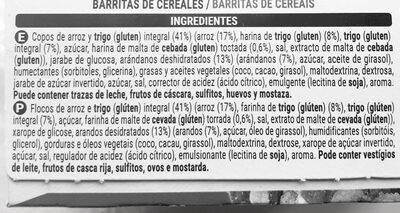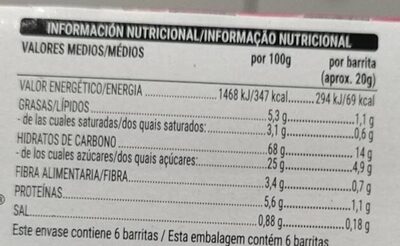Barritas arándanos - Hacendado - 6 x 20 g
Aquesta pàgina del producte no està completa. Podeu ajudar a completar-la editant-la i afegint-hi més dades a partir de les fotos ja disponibles, o fent-ne més amb l'aplicació de androide o iPhone / iPad. Gràcies!
×
Codi de barres: 8480000093745 (EAN / EAN-13)
Quantitat: 6 x 20 g
Empaquetament: en:container, es:Plastico aluminizado
Marques: Hacendado
Categories: Snacks, Aperitius dolços, Barretes, Barres de cereals
Etiquetes, certificacions, premis:
Source of fibre, Punt verd, Alt en fibra
Origen dels ingredients: Espanya, es:Palencia
Llocs de fabricació o processament: Spain
Botigues: Mercadona, Hacendado
Països on es va vendre: Espanya
Matching with your preferences
Entorn
Empaquetament
Transport
Report a problem
Fonts de dades
Producte afegit per openfoodfacts-contributors
Última modificació de la pàgina del producte per thaialagata.
La pàgina del producte, també editada per davidh, dieta2022, ecoscore-impact-estimator, elcoco, kiliweb, muldev, musarana, orcinus63, org-app-elcoco, packbot, roboto-app, sensey, tacite-mass-editor, teolemon, yuka.SHBzZ1M2c0wvY2dGeGZGaXBSanNvLzFIeExPa2VqT01HN0F0SVE9PQ, yuka.ZnFjWlNmbGRsdGM0d1BKdjhrLzUyZDVTbjZDYmV6aVVBdWdKSWc9PQ, yuka.sY2b0xO6T85zoF3NwEKvln5Zc97Dh2rJbTbimWuWn8rScqPrefRzsoWmEKs.










